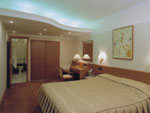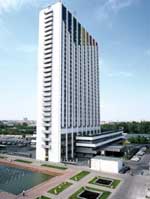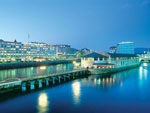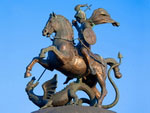 History of any city and state starts with its name. Moscow received its name thanks to the Moscow-river on the bank of which it was built on. There are two versions of the name: in Finno-Ugric it means Bear-river or Cow river; in Slavonic the root “mosk” means “viscous, oozy, swampy, raw, wet”.
History of any city and state starts with its name. Moscow received its name thanks to the Moscow-river on the bank of which it was built on. There are two versions of the name: in Finno-Ugric it means Bear-river or Cow river; in Slavonic the root “mosk” means “viscous, oozy, swampy, raw, wet”.
First written mentions about Moscow appeared in 1147. According to the Hypatian Chronicle the Prince Yuri Dolgorukiy met guests in the town of Moskov on April 4, 1147. It was the water-front mansion of princes that stood on the border of the principality. However, most probably that some settlement had existed here before, because Moscow situated on the intersection of trade ways between the North and the South of the Russian plain. Therefore, 1147 is considered the official year of foundation of the city.
Gradually the role of the city was growing: rulers of neighboring states struggled for the power in the city. Moscow was destroyed and again restored. First half of the 14th century was the period of the rise of Moscow. At that time Russian princes Yuriy Daniilovich and Ivan Kalita received the right to collect tribute from all principalities, conquered by the Golden Horde which ruled over the territory of Eastern Europe. In addition, the residence of the Metropolitan of Kiev and All Russia was removed to Moscow in 1325 that made the city one of the main centers of Orthodoxy. Later after the destruction of Constantinople, the city became the centre of the Orthodox Church.
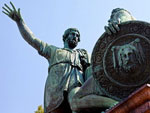 In the second half of 14th century Moscow suffered from new disasters: in 1353 an epidemic of plague took thousands of lives, and in 1365 almost the whole city was burnt away during the All Holy fire. After that terrible fire a new stone fortress (Kremlin) was built instead of wooden fortress in 1367-1368.
In the second half of 14th century Moscow suffered from new disasters: in 1353 an epidemic of plague took thousands of lives, and in 1365 almost the whole city was burnt away during the All Holy fire. After that terrible fire a new stone fortress (Kremlin) was built instead of wooden fortress in 1367-1368.
Moscow had been growing up to the 18th century, gradually becoming the capital of Russia. Rulers changed each other and foreign policy influence of the city became stronger. But in 1712 the capital was moved to St. Petersburg though Moscow remained the city of coronation of Russian emperors. In 1754 the great scientist Lomonosov founded the Moscow University (MSU in the future) which afterwards became the largest educational institution in Russia.
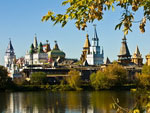 In 1812 during the Napoleon’s invasion of Russia Muscovites burned the city that Moscow wouldn’t go to the French army. This large-scale tactical action became the basis of the victory over Napoleon after which the great French commander had to retreat. Moscow was quickly restored and the Cathedral of Christ the Savior was built.
In 1812 during the Napoleon’s invasion of Russia Muscovites burned the city that Moscow wouldn’t go to the French army. This large-scale tactical action became the basis of the victory over Napoleon after which the great French commander had to retreat. Moscow was quickly restored and the Cathedral of Christ the Savior was built.
In 1918 after several revolutions Moscow became the capital of the USSR. And the appearance of the city had changed a great deal. The city expanded its borders, industrial enterprises and plants were built, new high and secondary special educational institutions opened its doors, public transport was developed (tram, trolleybus, metro). Reconstruction of Moscow led to the destruction of many architectural and historical monuments, most of which were temples and churches.
It is interesting that in 1920-1950 the government brought up a question to rename Moscow so that the name of the USSR capital could sound more “revolutionary” or in honor of the leaders of the “empire”. Particularly such names were proposed: Ilich (in honor of Lenin), Stalinodar, Stalin and others. But this plan was not implemented.
During the Great Patriotic War in winter of 1941-1942 a battle near Moscow became the first defeat of Nazi Germany in the Second World War. During the whole period of war the city remained under the army control. When the war was over, the first Victory Parade on Red Square took place on 24 June 1945. Later it was held annually on May 9. On the Victory Day the whole power of the Russian army is demonstrated on Red Square.
After the war Moscow was under reconstruction, and the city changed its appearance. Famous Stalin skyscrapers became the symbol of the Soviet monumental art. Also one-type high-rise buildings were built everywhere in 1960-1970. In 1980 Moscow hosted the XXII Olympic Games.
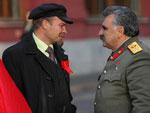 |
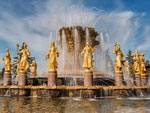 |
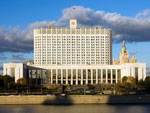 |
During the last decade of the 20th century Moscow went through a lot of shocks: in 1991 Moscow was the scene of August putsch that resulted in the dissolution of the USSR, in 1993 the government crisis reached its apogee and led to the attempt to capture the main country television center “Ostankino” and to the shooting of the building of the Supreme Soviet.
In the beginning of 21st century the situation changed totally: Moscow was renewed, construction of new modern business centers was commenced, and inflow of migrants took place. The Moscow metro was the world’s second-largest underground system by quantity of stations and daily passengers traffic. According to approximate estimations, today the capital numbers 15 million people.
Taking into account constant growth of Moscow, undoubtedly in the near future it will be the largest city in the world.

